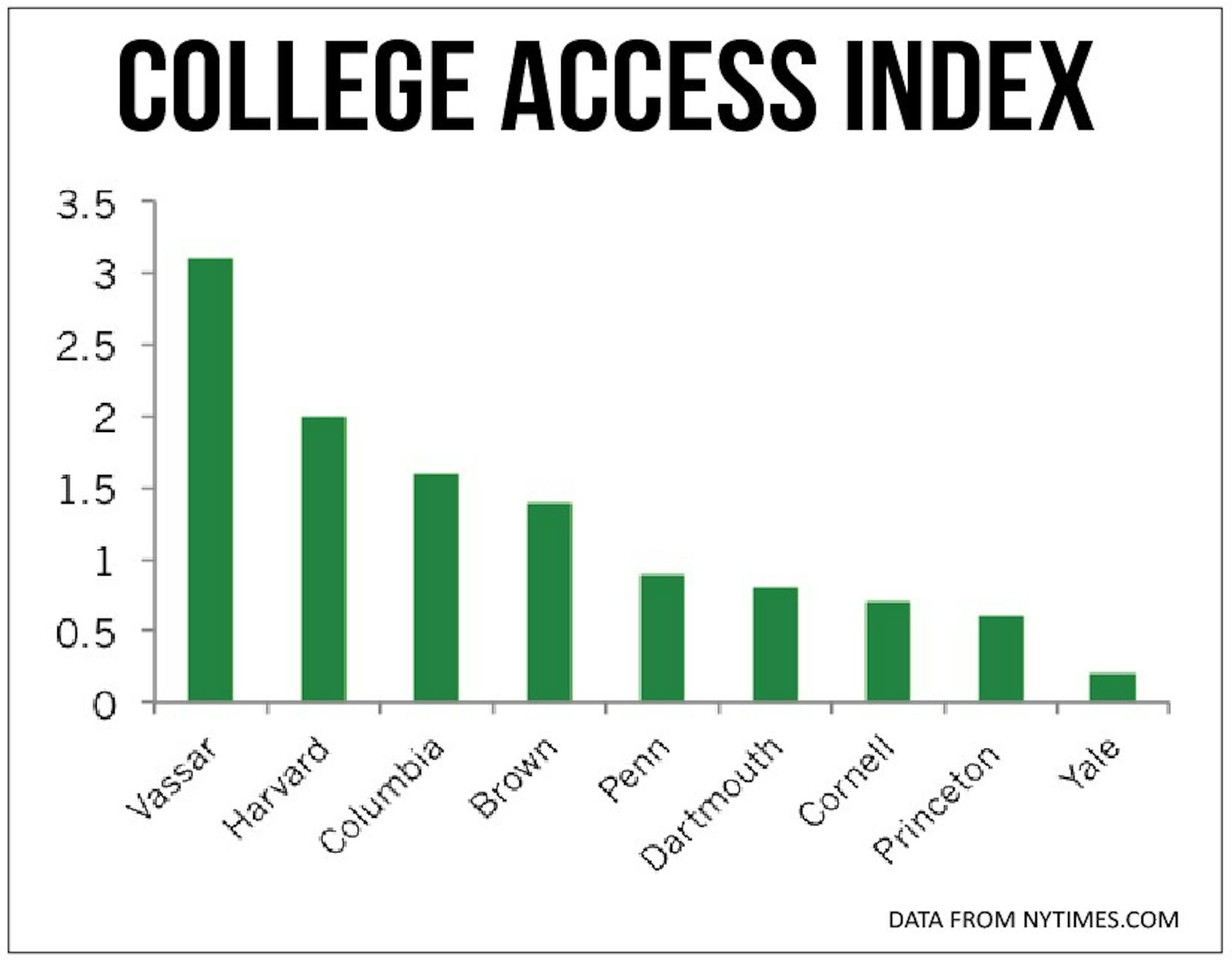Dartmouth ranked 31st for socioeconomic accessibility among around 100 colleges with four-year graduation rates of at least 75 percent, according to a New York Times analysis published last week. While dean of admissions and financial aid Maria Laskaris noted a growing awareness of inequality on campus, students interviewed said the College could do more to promote discussions of socioeconomic status.
The index combines data on cost of attendance and Pell grants received, with higher scores indicating greater accessibility. Vassar College ranked first, earning a score of 3.1, while Dartmouth received a score of 0.8, fifth of eight Ivy League institutions.
The analysis, published on The Upshot blog, determined its rankings using the number of freshmen receiving Pell grants in the past three years and the net price of schooling for households earning between $30,000 and $48,000 per year that qualify for federal aid.
Socioeconomic status affects the way admissions officers evaluate applications, dean of admissions and financial aid Maria Laskaris said, as students from lower socioeconomic backgrounds often come from schools with fewer resources, limited counseling and fewer academic and extracurricular opportunities.
Socioeconomic status also affects standardized test scores, and admissions officers take note if a student worked to support themselves, their family or a relative, she said.
“We think holistically about applicants,” Laskaris said. “We understand the context of the student and are mindful of the resources and opportunities available to them.”
Laskaris said 28 percent of the Class of 2018 come from families with annual incomes below $100,000, while 14 percent received Pell grants. The average scholarship awarded was $43,938.
Around 47 percent of students receive need-based assistance from Dartmouth, while around 55 percent receive some form of need-based aid, Laskaris said. The College awarded more than $24 million in need-based scholarship to the Class of 2018.
Dartmouth’s financial aid website advertises that admission is need blind.
Laskaris said she believes students, faculty and staff are discussing “the hidden costs” of college and the experience of low-income students more frequently than they have in past years.
Sociology professor Janice McCabe said socioeconomic diversity informs her classroom discussions. Speaking about the issue in class, she said, allows students to talk openly in an academic context.
Of eight students interviewed by The Dartmouth, all said students rarely talk about socioeconomic status.
Socioeconomic status can often be “an invisible part of someone’s identity” and a taboo subject on campus, said a female member of the Class of 2016, who requested anonymity because of her financial aid status.
“I am entirely dependent on financial aid, and it blows my mind that some of my friends pay $65,000 a year to come here when that’s more than my dad makes in a year,” she said. “There is a pressure to not publicly discuss your socioeconomic status if it’s not at a level associated with paying full tuition and not having to think twice about the cost of an FSP.”
Maddie Gilfert ’18 said she believes wealth is visible on campus, while a lack of wealth is not as obvious.
Tori Nevel ’16 said she has been surprised by the number of students who self-identify as middle or upper-middle class instead of upper class, when nearly half of the student body does not receive financial aid. She added that she feels pressured to dress, speak and act a certain way on campus.
Forming a community of people of lower socioeconomic status is difficult when people are scared to admit they are on financial aid, Nevel said. Often, she added, low socioeconomic status disappears among other measures of diversity.
Nevel, who receives financial aid, said she was shocked in her freshman year when other students called her “lucky” for receiving aid.
Receiving a degree from Dartmouth, Nevel said, will increase her socioeconomic status, a change she will have to process.
Laskaris said the admissions office recruits students from disadvantaged backgrounds.
On recruitment trips to disadvantaged communities, the first question is often about the cost of attendance, she said.
“They may feel like the door has been closed already and there is no way their family can afford the cost of Dartmouth,” Laskaris said, adding that officers emphasize the College’s financial aid offerings.
Anthony Choquette, a sophomore at Vassar College, said that discussions about socioeconomic diversity are a major part of campus discourse. While some students are content with the high ranking Vassar received, others believe more progress is necessary.
While Vassar received the top ranking, Choquette said, “this is not even close proportionally to what I think the real world is like and what I think colleges should represent.”
The net price of the College for low-to middle-income students is $4,900, with an average of 13 percent of freshmen receiving Pell grants in between 2012 and 2014, according to The Upshot. Dartmouth’s endowment per student is $660,000, 13th in the rankings, while its net price for lower- to middle-income households is the fourth lowest.




